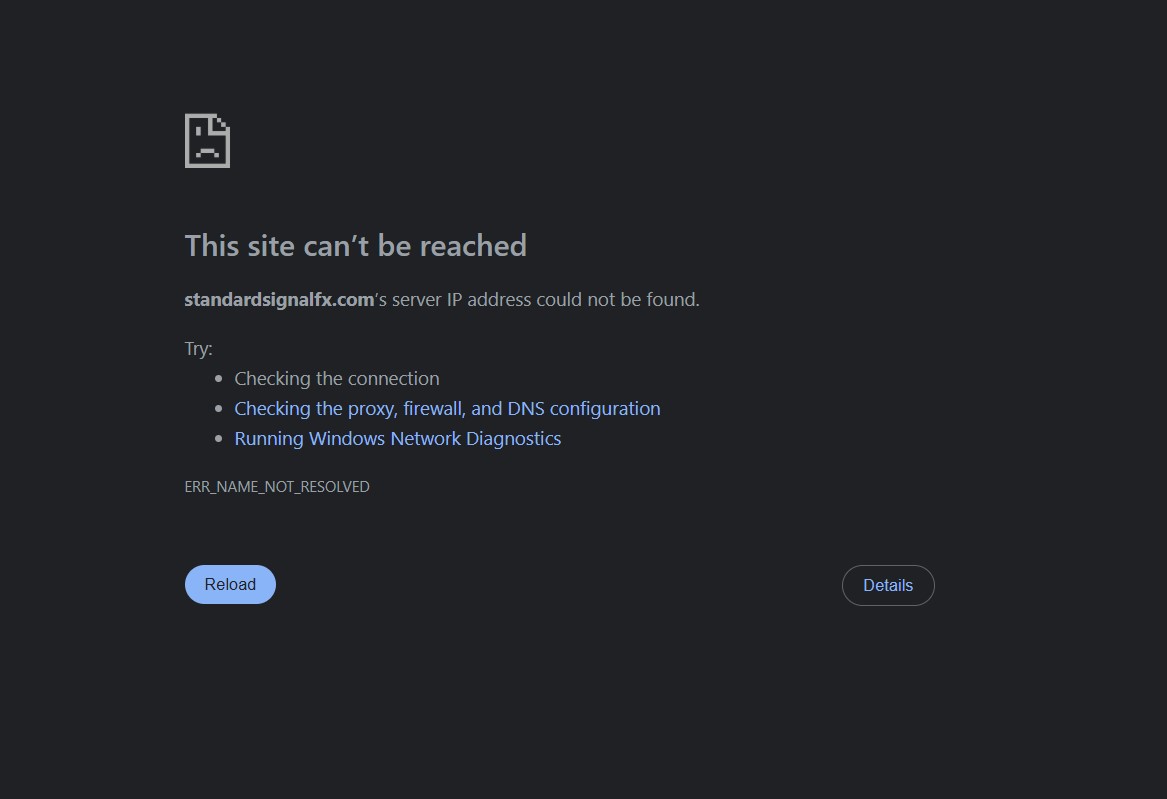StandardSignalFX.com Scam Review -A Trap For Investors
Opening — the friendly demo that quietly trapped trust (investor vignette)
Marco clicked a sponsored post promising “proven FX signals and managed accounts,” and landed on StandardSignalFX.com. The site looked credible: clean layout, professional stock photography, and a chat pop-up offering a free “strategy review.” An account manager called within hours, walked Marco through a demo account with simulated gains, and suggested a modest live deposit to “activate the strategy.”
At first, everything felt straightforward. The dashboard showed steady gains, a small payout went through, and the rep reassured Marco the system was smooth and regulated. Encouraged, he transferred more funds. A few weeks later, when he asked to withdraw a significant portion, the tone shifted — new verification steps, surprise processing fees, and requests to upgrade his tier before any major payout could be released. Messages slowed. That sequence—friendly onboarding, quick small wins, then escalating friction at payout time—is the repeating pattern this review examines.
Short verdict (risk-based)
StandardSignalFX.com exhibits a cluster of operational and behavioral warning signs that, in combination, create a high-risk profile: limited transparency about ownership and licensing, marketing designed to rapidly increase deposits, a documented pattern of deposit-easy/withdrawal-hard behavior, and contractual terms that give the operator broad discretion. This assessment is risk-based and practical, intended to help readers spot testable red flags.
1) Polished marketing, thin verifiable facts
The website invests heavily in professional design and persuasive language: promises of “consistent alpha,” “expert traders,” and “institutional-grade signals.” Visually convincing material, however, is not a substitute for verifiable facts. Credible brokers typically provide clearly published company registration details, named directors, regulator licence numbers, and custodian or banking partners.
StandardSignalFX’s public-facing pages emphasize performance but offer little in the way of concrete corporate or regulatory proof. Where you would expect licence numbers and audit statements, the content is generic and promotional. That gap turns a polished site into a persuasion engine rather than a trust-building document.
2) Who is accountable? — ownership and contact opacity
A core due-diligence question is simple: who can you hold responsible? Red flags include WHOIS privacy protection, “about” pages full of stock photos and marketing blurbs, virtual office addresses, and generic contact forms rather than verifiable corporate contacts.
StandardSignalFX demonstrates several of these opacity traits. When ownership is masked and leadership identities aren’t verifiable, accountability is weak — making it difficult to pursue any formal complaints or legal remedies if funds are frozen or inaccessible.
3) Regulation — the difference that governance makes
Regulatory oversight provides enforceable protections: segregated client accounts, capital requirements, audits, and complaints channels. Legitimate brokers publish regulator names and licence numbers so prospective clients can confirm them.
StandardSignalFX’s public materials do not include clearly checkable licences from recognized authorities. Vague claims about “partner compliance” or “trusted third parties” are not the same as being directly regulated. Without visible, verifiable oversight, clients face materially less protection if disputes arise.
4) The onboarding funnel — engineered to accelerate deposits
Many problematic platforms follow a predictable funnel:
-
Rapid, frictionless signup and immediate human outreach.
-
Early small payouts or demos to build confidence.
-
Persistent encouragement to upgrade to VIP accounts with larger minimums.
-
New hurdles when users try to withdraw significant sums.
StandardSignalFX’s reported onboarding matches that sequence: responsive account managers, tiered plans promising superior returns, and time-limited “exclusive” offers. Those tactics work to increase deposit volume before users have time to perform meaningful checks or test withdrawal mechanics.
5) Deposit vs withdrawal asymmetry — the operational litmus test
A highly reliable practical check is to observe money flows:
-
Are deposits processed smoothly across multiple methods?
-
Do small withdrawals succeed initially to build trust?
-
Do larger withdrawal requests trigger additional verification steps, surprise fees, or indefinite delays?
Users describing operations like StandardSignalFX often report the exact pattern above: early test withdrawals accepted, then escalating friction when larger funds are requested. That “easy in, hard out” asymmetry is the clearest, most actionable red flag in practice.
6) Sales and psychological levers — how trust is engineered
StandardSignalFX uses many classic persuasion techniques: urgency (limited VIP slots), authority cues (“proprietary strategy”), social proof (testimonials and screenshots), and direct account manager outreach. Small initial wins (real or simulated) reduce skepticism and make escalating deposits feel rational.
Recognizing these psychological levers helps explain why talented, cautious people can end up increasing exposure quickly on platforms that ultimately create exit problems.
7) Terms and contractual levers — where practical control lives
The terms and conditions often reveal the practical tools an operator will rely upon when payouts become awkward. Clauses to watch for include:
-
Broad rights to freeze accounts for vague “security” or “compliance” reasons.
-
Processing or “release” fees applied only at withdrawal time.
-
Bonus conditions that lock funds behind unrealistic trading volumes.
-
Dispute resolution clauses placing claims in distant jurisdictions.
If StandardSignalFX’s T&Cs include such language, those clauses are the likely mechanisms used to delay or deny payouts.
8) Technical signals & rebranding ease
Technical metadata (short domain age, masked WHOIS, shared hosting with other short-lived finance sites) matters because it reveals operational fragility: easy rebrand, domain switch, or disappearance when scrutiny grows. StandardSignalFX’s public footprint contains several of these technical traits, raising the practical chance of sudden rebranding or shutdown.
9) Community and independent signals — why collective patterns matter
Individually, a complaint could be an outlier. But consistent complaints across multiple independent channels—users describing blocked withdrawals, escalating document demands, and disappearing support—build a pattern. Where multiple independent voices report similar operational problems, the inference that the platform is unreliable strengthens substantially.
10) Quick red-flag checklist — a one-page test
Before you risk capital with StandardSignalFX.com, use this filter:
-
Is the legal company name and registration number published and independently verifiable?
-
Does the platform show a licence from a recognised financial regulator you can confirm?
-
Are custodial banks or third-party auditors named and checkable?
-
Do independent users report successful large withdrawals (not just small tests)?
-
Is domain ownership masked or is the domain recently registered?
-
Do account managers pressure you to upgrade before you’ve tested withdrawals at scale?
-
Are performance claims supported by exportable transaction logs or third-party attestations?
-
Do the T&Cs include broad discretionary powers for the operator (freezes, retroactive fees)?
Multiple “no” answers on that checklist significantly elevate your risk.
Analytical conclusion — why the cumulative picture counts
No single indicator is a legal finding. New companies can be opaque, and marketing can be over-optimistic. The problem is the accumulation: professional-looking marketing, masked ownership, lack of verifiable regulation, aggressive upsell mechanics, and repeated deposit-easy/withdrawal-hard reports together form a pattern commonly associated with operations that prioritize intake over fair, reliable payouts.
This review is a practical, risk-based assessment. Until StandardSignalFX publishes transparent, independently verifiable company registration, a checkable regulator licence, named custodial arrangements, audited performance data, and a history of timely, documented withdrawals, its public profile is consistent with a high-risk operation. Exercise extreme caution.
Report StandardSignalFX.com Scam and Recover Your Funds
If you have lost money to StandardSignalFX.com Scam, it’s important to take action immediately. Report the scam to Jayen-consulting.com, a trusted platform that assists victims in recovering their stolen funds. The sooner you act, the better your chances of reclaiming your money and holding these fraudsters accountable.
Scam brokers like StandardSignalFX.com continue to target unsuspecting investors. Stay informed, avoid unregulated platforms, and report scams to protect yourself and others from financial fraud.
Stay smart. Stay safe.






